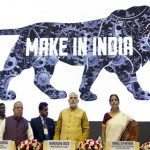In his first year as prime minister, Narendra Modi has had to craft a foreign policy in a global setting that has been transformed by the rapid rise of the Chinese economy and its increasing belligerence towards its Asian neighbours. Meanwhile, Russia’s stand-off with NATO has forced it to lean towards China; West Asia is in turmoil; and the retreat of the remaining U.S. forces from Afghanistan will encourage terrorism emanating from Pakistan that primarily targets India but has also become global.
It is in this complex and changing global setting that Modi has emerged as a bold deal-maker—with flexible and strategic negotiations with the U.S. that are balanced by a reaching out to China and rejuvenating relations with Russia.
Modi’s visits to Myanmar, Nepal, and Sri Lanka—three of India’s six South Asian neighbours—have restored warmth to relations with these countries too, at a time when China is heavily cultivating its own ties with these countries. India believes that China’s lavish investments and armaments for its South Asian neighbours is an “encirclement” of India.
In this fluid Asian strategic backdrop, the U.S. has become Modi’s strategic focus—and India can attain more influence in global security and financial institutions only with American support. Besides, India needs investment and the involvement of American companies in its infrastructure build-out, collaboration in the indigenisation of defence industries, and an enhanced technology partnership between the navies of the two countries.
At present, Russia remains the largest supplier of weapons to India, and it is willing to share high-technology so that India can indigenise its nuclear and defence production sectors. An example of India’s rejuvenated relations with Russia was President Pranab Mukherjee’s presence on May 9 at Russia’s 70th anniversary victory ceremonies to mark the end of World War II, while the West, including Russia’s wartime allies UK and the U.S., stayed away.
At the same time, it is imperative for India to consolidate its working relations with China. But this bilateral equation suffers from a shortfall of trust that has been widened by the 4,050 kilometre un-demarcated border and a trade deficit of approximately $40 billion.
Middle powers in the Indo-Pacific, such as Canada, Australia, and Japan need to balance against the newly-risen China. They recognise that India is the only country in Asia of comparable size and potential—and this is facilitating the building of India’s relations with these countries. All of them also happen to be treaty allies of the U.S.
Among the middle powers, Japan is especially important. Both India and Japan feel the pressure from China and Modi’s warm overtures to Japan early in his term will go a long way. This is evident from Japan’s potential sale of high-technology weapons systems to India, which will make India the first non-treaty ally to receive defence technology from Japan.
The prime minister’s interactions with Canada and Australia have been equally important—both countries are sources of uranium for India’s nuclear energy programme. Additionally, Australia and Japan are also important for the revival of quadrilateral maritime cooperation—along with the U.S.—in the Indo-Pacific. Modi has also reached out to France as a source of high-technology weapon systems, nuclear energy technology, and for support in international institutions.
Closer to home, Modi visited Mauritius and Seychelles—nations that, along with Sri Lanka, are integral to India’s strategy to balance China’s push into the Indian Ocean Region through its proposed Maritime Silk Road project.
In his first year, Modi also made the time to attend meetings of multilateral institutions such as the G20, BRICS, and the East Asia Summit. His pragmatic style helped unlock stalemates at the World Trade Organisation and on climate change issues, while making it clear that India will continue to use coal to generate power, but wants to simultaneously expand investment in solar and wind power.
At the end of one year then, it can be said that Modi has successfully enlarged India’s strategic autonomy by cultivating close relations with its neighbours, with the P5 countries, other middle powers, and Indian Ocean island countries. But Pakistan remains a big conundrum for India.
In terms of inbound investment—which has been a major thrust of Modi’s foreign policy—there is significant progress. The U.S. ($40 billion), Japan ($35 billion), China ($20 billion), and South Korea ($10 billion) have all made commitments from a mix of public and private sources in infrastructure and defence industries. Even if only a small percentage of these investments flow in soon, it will give an impetus to the Indian economy, especially in improving infrastructure and creating employment.
From here on, the best way India can advance its foreign policy will be to secure a high rate of growth as rapidly as possible. The Modi government is working towards this goal through domestic policy reforms that include transparent governance (as seen in the e-auction of telecom spectrum and coal); the abolition of obsolete institutions like the Planning Commission; harmonisation of taxes under the pending Goods and Services Tax; a digitisation of the economy; and the creation of a modest social security net.
In addition, the devolution of more revenue and power to the states is likely to set in motion a cycle of competitive federalism that will make the overall Indian economy more competitive and will add to India’s global strategic weight.
Neelam Deo is Co-founder and Director, Gateway House: Indian Council on Global Relations; She has been the Indian Ambassador to Denmark and Ivory Coast; and former Consul General in New York.
This article was exclusively written for Gateway House: Indian Council on Global Relations. You can read more exclusive content here.
For interview requests with the author, or for permission to republish, please contact outreach@gatewayhouse.in.
© Copyright 2015 Gateway House: Indian Council on Global Relations. All rights reserved. Any unauthorized copying or reproduction is strictly prohibited


